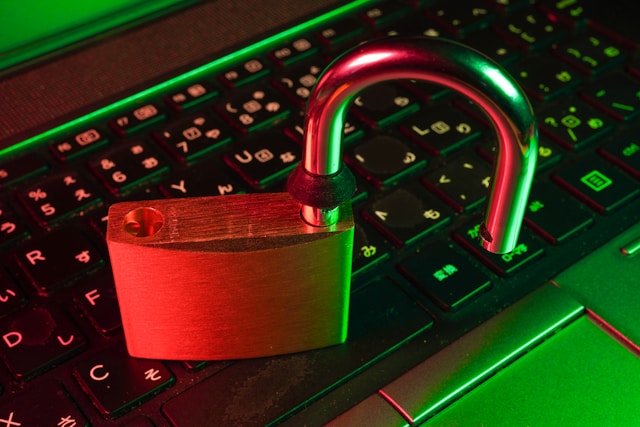The gaming world is a haven for enthusiasts, but it’s also a target-rich environment for cybercriminals. Phishing scams in gaming exploit the trust and excitement of players to steal personal information, login credentials, and even financial details. By understanding the tactics used and adopting secure practices, you can protect yourself from falling victim to these schemes.
What Are Phishing Scams in Gaming?
Phishing scams are fraudulent attempts to acquire sensitive information by posing as a legitimate entity. In gaming, scammers often imitate majesticslotsclub.net/fr game publishers, platforms, or trusted community members to trick players into divulging details like:
- Login credentials
- Payment information
- Personal data
Common Ways Phishing Scams Are Executed in Gaming
1. Fake Game Updates and Patches
One popular tactic is creating counterfeit updates or patches that seem essential. Players may receive an email or message with a download link, claiming it’s a critical update. However, clicking the link installs malicious software instead.

2. Phishing Emails
Emails claiming to be from trusted sources, like game developers or platforms, are a classic method. These emails might:
- Warn of account suspension due to suspicious activity.
- Offer rewards like free skins or currency.
- Include links to fake login pages.
3. In-Game Messages
Some phishing attempts occur directly in games. Fraudsters might pose as administrators or other players, sending messages with links to “exclusive content” or asking for login details to “verify your account.”
4. Fake Websites and Forums
Phishers create counterfeit websites or forums that look identical to legitimate ones. They may advertise free items, exclusive betas, or cheats to lure players into entering sensitive information.
How to Spot Phishing Attempts in Gaming
1. Examine the Sender’s Email Address
Always check the sender’s email for inconsistencies. Legitimate companies usually use official domains. For instance:
- A legitimate email from Steam might come from “support@steampowered.com.”
- A phishing attempt might use “support@steeam.com” or “steamhelp@gmail.com.”
2. Hover Over Links Before Clicking
Before clicking on any link, hover over it to see its true destination. Phishing links often use slight variations of trusted URLs, such as “www.blizzsard.com” instead of “www.blizzard.com.”
3. Be Wary of Urgent Language
Phishing messages often create a sense of urgency to pressure victims into acting quickly. Phrases like:
- “Your account will be suspended in 24 hours.”
- “Claim your free reward before it expires!”
Always verify such claims through official channels.
4. Look for Spelling and Grammar Mistakes
Reputable companies maintain professional communication. If an email or message is riddled with spelling errors or awkward phrasing, it’s likely a scam.
5. Avoid Suspicious Attachments
Legitimate game companies rarely send attachments in unsolicited emails. Avoid downloading files unless you’re certain of their authenticity.
Tips to Avoid Phishing Scams in Gaming
1. Enable Two-Factor Authentication (2FA)
Two-factor authentication adds an extra layer of security to your accounts. Two-factor authentication ensures that even if your login credentials are compromised, unauthorized access to your account is prevented.
2. Use Unique Passwords
Avoid using the same password across multiple platforms. Unique, strong passwords make it harder for scammers to access your accounts.

3. Access Official Sources Only
Always download updates, patches, or content directly from official websites or platforms. Bookmark legitimate sites to ensure you’re not redirected to fraudulent ones.
4. Avoid Sharing Personal Information
Never share login credentials, personal information, or payment details via email, message, or third-party websites. Official entities will never ask for sensitive information in this manner.
5. Install Reliable Security Software
Antivirus and anti-phishing software can help detect malicious links and files, providing an extra layer of protection.
Reporting Phishing Attempts
1. Contact the Game Publisher or Platform
Most gaming companies have dedicated teams to handle security issues. For example:
- Report phishing emails to phishing@blizzard.com for Blizzard Entertainment.
- Use Steam’s support page to report scams related to Valve games.
2. Utilize In-Game Reporting Tools
Many games include in-game options to report suspicious messages or behavior. Use these tools to alert the developers.
3. Forward Phishing Emails to Authorities
In addition to reporting to gaming companies, you can forward phishing emails to national cybersecurity agencies or anti-phishing organizations for further investigation.
Why It’s Important to Stay Vigilant
Phishing scams in gaming are not just about stealing accounts. They can lead to more severe consequences, such as:
- Identity Theft: Scammers may use stolen information for fraudulent purposes.
- Financial Loss: Linked payment methods can be exploited for unauthorized transactions.
- Reputational Damage: Scammers might use your account to target others, tarnishing your reputation in the gaming community.
Conclusion
Protecting yourself from phishing scams in gaming requires awareness and proactive measures. By recognizing phishing attempts, verifying communications, and securing your accounts, you can enjoy a safer gaming experience. Always remember when in doubt, don’t click.

